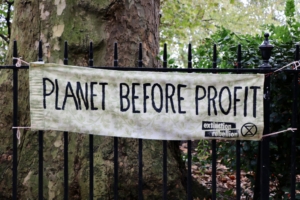March Jobs, the Union Jack, and Obama’s BFFs
Here’s What You Need to Know
The Bureau of Labor Statistics (BLS) will release its monthly jobs report tomorrow bright and early at 8:30am, and predictions suggest the national unemployment rate will remain steady around 4.9% after February’s gain of 242,000 jobs.
But are those the only figures that matter? The BLS definition of being unemployed means one must have made efforts to find employment within the past four weeks. While the unemployment rate will be in all the headlines and talk show chatter, it leaves out those who might want employment but have given up looking.
Here are the top 4 things that matter in the monthly jobs report that you won’t see in the news. (Warning: You may become smarter than most reporters if you keep reading):
Subscribe to Receive Insights
"*" indicates required fields
- Labor Force Participation: The country’s labor force participation rate is probably the most important figure because it helps determine what portion of the overall population is unemployed but not counted in the official unemployment rate. The labor force participation rate shows how unrepresentative the current unemployment rate might be. The recent labor force participation rates have been the lowest since the late 1970’s, which is why the low official employment rates has not been widely celebrated.
- Average Hourly Earnings: Looking at average hourly earnings could also help indicate how positive the jobs report really is. If hundreds of thousands of new jobs are created, that’s good. But if average hourly earnings go down, it stands to reason that these new jobs might not be paying well enough for people to make ends meet.
- Jobs Gained or Lost by Sector: Take a look at targeted business sectors’ jobs performance to get a sense of how vital industries are doing. For example, review employment figures for oil, gas, and mining interests to see how market conditions and government actions are contributing to the job market in that industry.
- The “U-6” Figure: BLS refers to the unemployment rate mentioned above as the “U-3.” The trouble with the “U-3” measure of unemployment, as we mentioned earlier, is that while it ignores a substantial segment of unemployed people, it treats the underemployed as fully employed. As you’ve worked as little as an hour in the past month, the BLS considers you “employed.” There is, however, another figure referred to as the U-6. This measures the unemployed and the underemployed, giving a more complete picture of the state of the American labor force.
By looking at these figures, you can get a better understanding of what tomorrow’s report really indicates for the U.S. economy, and cut through attempts to spin the figures in order to suggest they’re better or worse than they actually are.
News You Can Use
BUBBLE BUSTER
Do you live in a bubble? A new quiz written by the American Enterprise’s Charles Murray can tell you. Questions about what type of neighborhoods you’ve lived in, your TV viewing habits, whether you’ve held a job that “caused something to hurt at the end of the day,” and how many Evangelical Christians you’ve befriended determine your score. The higher you score, the thinner your bubble.
DO YOU KNOW JACK?
Last week, New Zealanders voted to retain the “Union Jack emblazoned” flag. While some commentators suggested the overwhelming endorsement of the incumbent design was due to the proposed alternative looking more “like a tea towel” than a proud nation’s standard, others saw it as the latest in a long list of Commonwealth referendums that maintained the status quo (e.g., Belfast’s 2012 referendum to unsuccessfully limit the flying of the Union Jack and the failed 2014 Scottish independence vote). The Guardian’s Martin Kettle went so far as to speculate that it is a promising sign for the UK’s Brexit referendum in June.
WHAT YOU DON’T KNOW CAN HURT YOU
Last week, Credit Suisse CEO Tidjane Thiam publicly criticized his own banking division saying, “When I spoke on October 21 I was not aware of the existence of the positions on that scale,” adding that he would have made deeper cuts then if he had known. The comments were made after it became clear the firm’s investment bankers had been concealing risk exposure from senior management in the run-up to an October 2015 strategic revamp. The incident is just another example of the value of knowing what you don’t know.
UBERING IS TOUGHER THAN IT LOOKS
Fortune reports, “In the last few years, the so-called ‘on-demand’ companies that deliver anything from a home cleaning to a ride to tacos have seen an explosion in popularity. However, their ability to make money from their labor-intensive (and expensive) operations is increasingly coming into question.” Other on-demand companies are discovering that Uber’s successful model doesn’t automatically translate into other markets. “Across a variety of on-demand apps,” writes Farhad Manjoo of The New York Times, “prices are rising, service is declining, business models are shifting, and in some cases, companies are closing down.”
THE NEXT LABOR FIGHT
As debate over the labor practices in the new gig economy continues, regulators are beginning to take note of companies who avoid many labor laws by utilizing contract workers rather than fulltime employees. FiscalNote’s Josh Pudnos explains that the push for greater regulation of the gig economy’s labor force is resembling the fight for minimum wage increases. He pointed out, “Efforts in the states are already underway to classify the services performed via the gig economy.” How the fight over this new and growing “flexible workforce” ends will be determined by which side most effectively marshals support among policymakers and the public. What’s clear from Pudnos’ assessment is the fight has already begun.
HILLARY’S TRUMP PLAYBOOK
As Hillary Clinton gears up for a general election battle with Donald Trump, USA Todayreports her team is dusting off the playbook she planned to use against former New York City Mayor Rudy Giuliani in the 2000 U.S. Senate race. Giuliani did not end up running due to a prostate cancer diagnosis, but Clinton aides think her planned approach to dealing with the rough-and-tumble Rudy will work against Trump. Delve CEO Jeff Berkowitz, who previously worked for Mayor Giuliani, told USA Today it was unlikely to work. “Trump is growing the base by being confrontational [while Clinton has yet to energize the Democratic base]. I suspect Trump is going to be immune” from Clinton’s never-tested 2000 playbook.
WHO ARE OBAMA’S BFFs?
Drawing on years of observations and conversations with President Obama, Jeffrey Goldberg of The Atlantic has placed world leaders on a continuum that reflects “the state of their relations with Obama—from actually warm to ice-cold.” The list reveals few major surprises, but highlights the difficulty Obama has had navigating a rapidly shifting world. For example, from the outset of his presidency, Obama cultivated a close relationship with Turkish Prime Minister Recep Tayyip Erdogan, but as the Obama years come to a close, Erdogan barely ranks above Israeli Prime Minister Benjamin Netanyahu, with whom Obama has had a notoriously difficult relationship.
TIME FOR A NEW ERA OF COMPETITION
From across the pond, The Economist declares, “America is meant to be a temple of free enterprise. It isn’t.” The magazine cites economic observers who suggest the U.S. firms’ high profits are evidence of low levels of competition. To increase competition, the magazine suggests, “the first step is to take aim at cosseted incumbents” by better policing mergers and loosening copyright and patent laws. “The second step is to make life easier for startups and small firms” by limiting the expansion of red tape and regulation. Such a prescription would mean disruption for some, but it might “lift Americans’ spirits as well as their economy.” Whether you are an incumbent industry player or an emerging start up, how policymakers answer this challenge will determine your future success.
NETFLIX PULLS BACK THE THROTTLE
It surfaced last week that Netflix has been throttling the quality of its video to AT&T and Verizon wireless customers over the past five years in an attempt to “protect consumers from exceeding mobile data caps.” Tech industry journalist John Shinal highlights the possible hypocrisy of this move, writing, “Given the time frame, however, that means Netflix was throttling video, or slowing its speed, even while it was arguing publicly for new rules that prohibit big Internet providers from doing so.” The debate over net neutrality is far from over but Netflix may have just given telecom giants a new argument for their arsenal.
Mark Your Calendars
Friday, April 1: U.S. March Employment Report released
Tuesday, April 5: Wisconsin Primary
Saturday, April 9: Wyoming Caucus (D)
Subscribe here to get TL;DR in you inbox each week.



